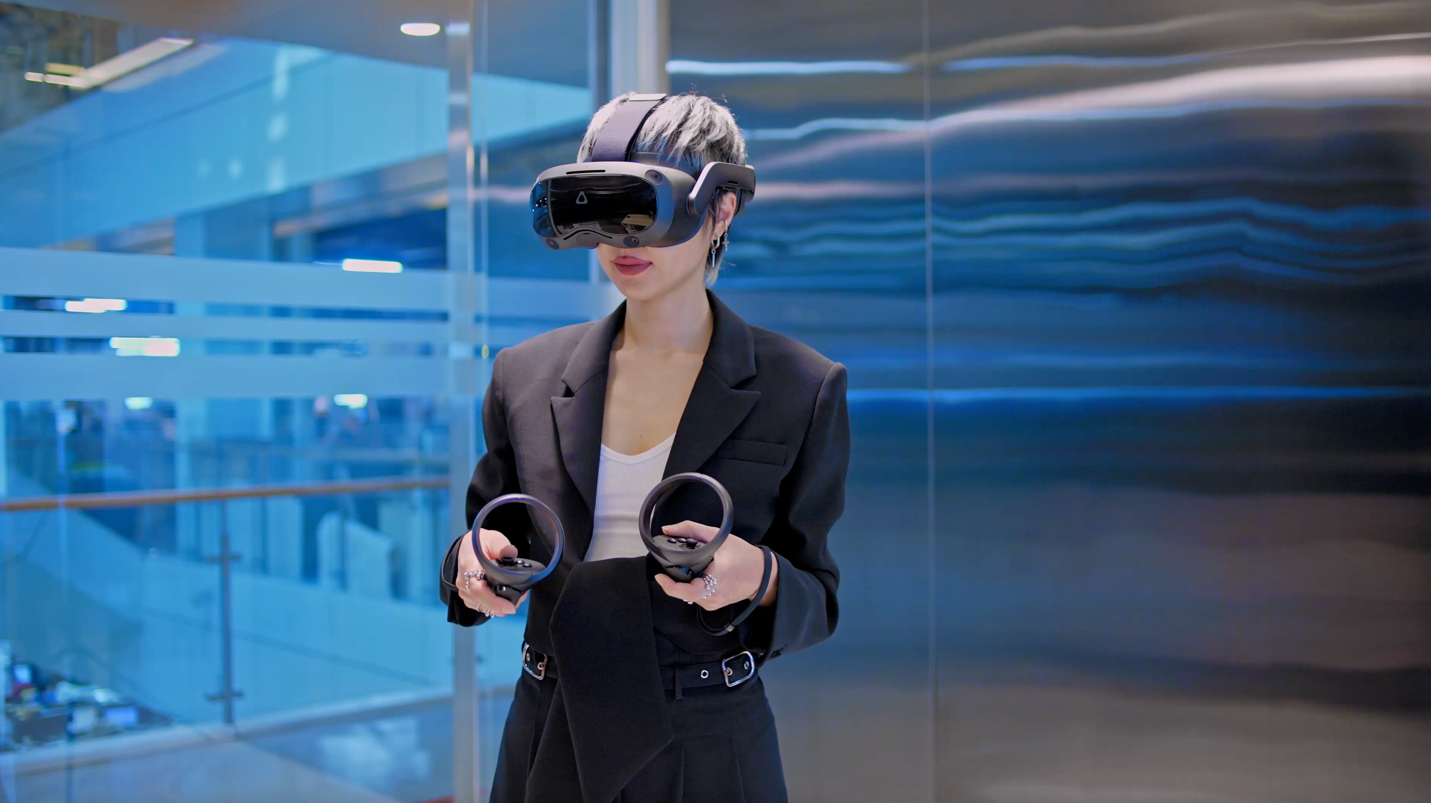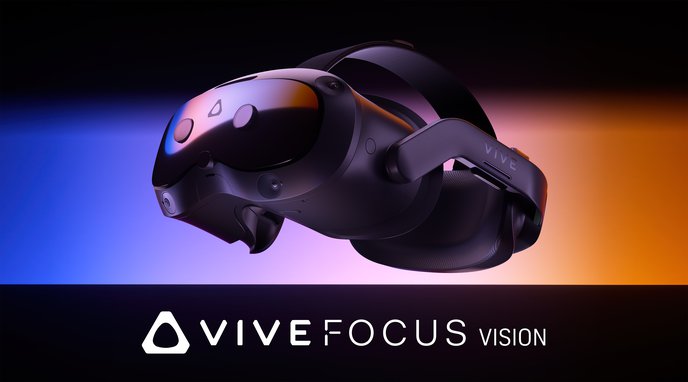Ever thought about getting a standalone VR headset (or all-in-one VR headset)? Over the past decade, virtual reality has become increasingly popular, drawing more people into what some have called the metaverse.
The rise of standalone VR devices has played a significant role in this trend, making it easier than ever to dive into virtual worlds without needing a lot of extra equipment.
Whether you're exploring VR for the first time or considering an upgrade to your existing setup, an all-in-one VR headset is an excellent way to dive into new experiences.
Even if you're not yet familiar with virtual reality, you might not realize how impactful standalone VR can be. Don't worry—HTC VIVE is here to show you the importance of this immersive technology.
Here's what you need to know about all-in-one VR headsets and why they might be the perfect choice for your next VR adventure.
What is an all-in-one VR headset?
An all-in-one (AIO) VR headset is a wearable device capable of offering its user a complete virtual reality experience. It comprises a head-mounted display (HMD), processor, and battery that wrap around your head. The HMD is essentially a screen or pair of screens that sit close to your eyes.
Some AIO VR headsets include built-in speakers or headphones you can wear to enjoy 3D audio. You might also be able to navigate the VR environment you see on the display using your bare hands if the device includes hand tracking. Otherwise, virtual navigation requires pairing the headset with one or two VR controllers.
If wearing screens and a battery over your head sounds uncomfortable, that’s because—for poorly constructed VR headsets—it can be! But VIVE VR headsets are designed with comfort in mind, so there’s a good fit for everyone. (More on that later.)
What is a standalone VR headset?
You may have heard the term “standalone VR headset” used to describe a monolithic VR device, which could leave you wondering what makes it any different from an all-in-one VR headset.
Actually, standalone VR and all-in-one VR refer to exactly the same thing. Feel free to use the terms interchangeably as we do!
Standalone VR is just one of the major categories of VR headsets, however. It differs from the more traditional category of PC VR.
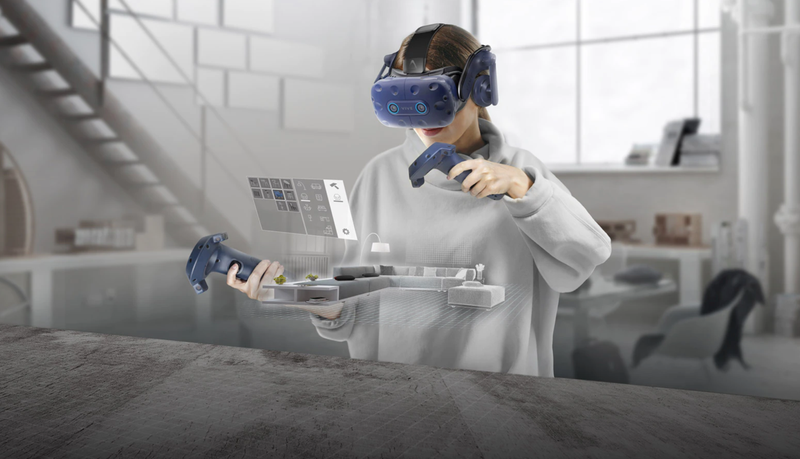
What’s the difference between standalone VR and PC VR?
An all-in-one VR headset is standalone, which means it doesn’t require a connection to a PC. As you may have guessed, PC VR is virtual reality that needs to make use of a computer.
You might be wondering why a VR headset would need to depend on a computer’s resources in the first place. Perhaps you’ve seen someone using a VR headset without a PC before. What gives?
The short answer is that VR games and apps are very graphics-intensive, and the powerful hardware required to process and render those graphics would be extremely difficult to pack into a VR headset. Imagine wearing bulky computer parts on your head!
All-in-one VR and PC VR are designed to offer different kinds of immersive experiences, and the first difference most people think of is graphics. Accordingly, we’ll examine those first.
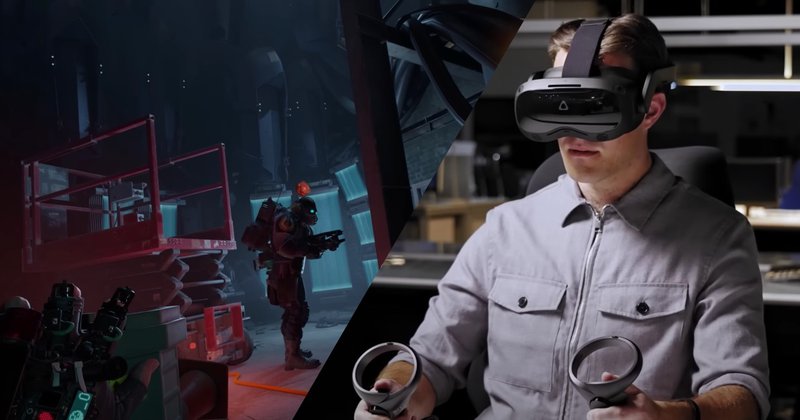
Graphics: A matter of resources.
To help create immersion, three-dimensional VR visuals have to be very detailed and coordinated with the movements of the person wearing the headset.
A PC VR headset, then, links up to a VR-ready computer to utilize its processing and rendering power. This is usually achieved with cables.
But wait, if experiencing VR requires these kinds of resources, how can an all-in-one VR headset function on its own?
Since there’s a limit to what a standalone VR device can handle, a tradeoff is made: All-in-one VR headsets deliver less visually complex graphics to gain independence from computers.
But the differences between PC VR and standalone VR don’t just boil down to graphics. There are a lot of factors to consider when choosing a VR headset, so let’s take a look at what else sets all-in-one VR apart from PC VR.
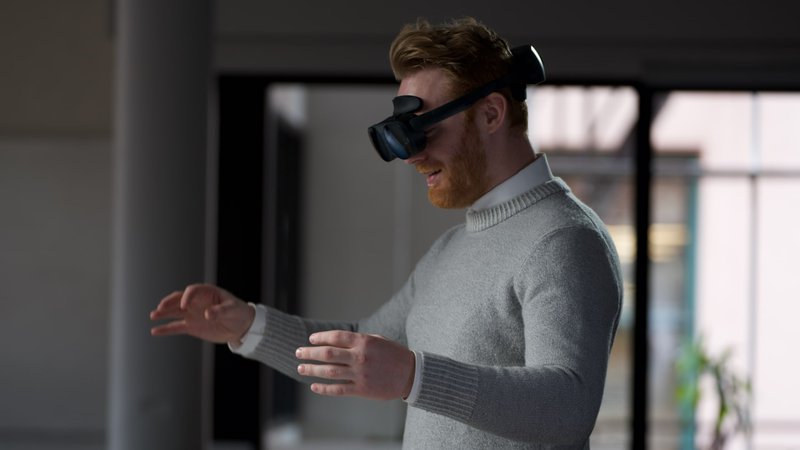
Tracking: A single goal with different approaches.
Tracking in VR refers to how the headset pinpoints the positions of real-world objects in the physical space you occupy, such as your hands, VR controllers, trackers worn on your limbs, and the HMD itself.
The physical locations and movements of these objects are recreated in the virtual environment so that, when you lift a controller up to point at something, for instance, your arm as you see it in VR lifts in the same way and at the same time.
Tracking is achieved either through the VR headset’s built-in cameras (inside-out tracking) or with the help of an external device (outside-in tracking).
One example of an external tracking device is a base station, which is a box-like object that sits in the VR play area. A base station continuously fills the room with non-visible light, which is then picked up by receptors on the VR headset and controllers to help calculate their relative positions.
Since all-in-one VR headsets are designed to be usable on their own, they employ inside-out tracking, while PC VR headsets may use either inside-out tracking or outside-in tracking.
There may also be differences in the kinds of movement tracked by PC VR and AIO VR headsets. Some standalone devices only register three degrees of freedom (3DoF), while most PC VR headsets can track with six degrees of freedom (6DoF).
What’s the difference? With 3DoF, it’s possible to look around a virtual environment by rotating your head, but you can’t traverse that environment by physically moving your body forward. You can do this, however, with 6DoF, so 6DoF tracking makes your movements in VR more realistic and intuitive.
Only some standalone headsets—like the VIVE Focus 3 and VIVE XR Elite—are capable of offering 6DoF.
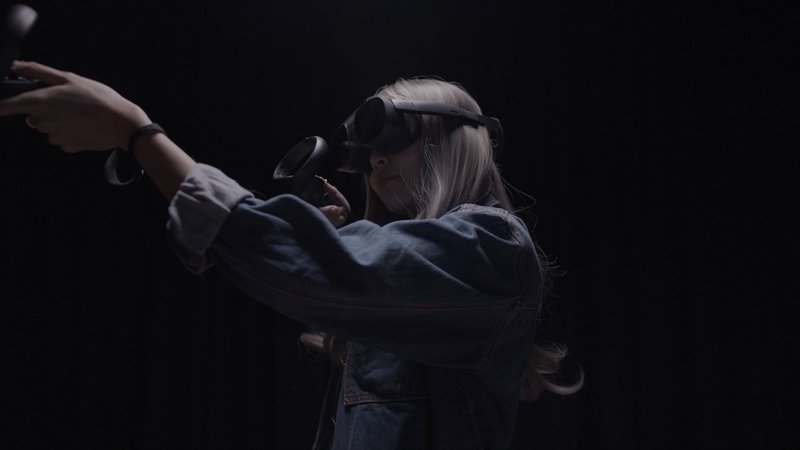
Portability: Where do you want to enjoy VR?
Unless you own a high-end gaming laptop, chances are that you wouldn’t want to carry around your VR-ready PC. That’s because PC VR devices are typically powered by desktop computers, so their highly immersive, visually intense experiences are best enjoyed in one specific location.
Portability is one area where all-in-one VR devices really shine. Since you don’t need to tether them to another device, they can technically be used anywhere. You could take a relaxing virtual tour of Rome while in bed, do some VR martial arts in your living room, and even join a company meeting from a café.
Most currently available standalone VR headsets are still pretty sizeable, however. Designing a highly portable, lightweight device has been an ongoing effort in the VR industry—and one that HTC VIVE demonstrated in 2021 with VIVE Flow, the first-of-a-kind immersive VR glasses.
Comfort: Does being tethered make a difference?
We mentioned that PC VR headsets need to be connected to a computer, and some people may find the idea of a physical cable attached to their device unappealing.
Although the tethers on a PC VR headset are directed away from you and generally don’t get in the way of your immersive experience, they will eventually restrict your movement if you try to, say, walk away from the VR play area.
But we should also note that it’s possible to go untethered with PC VR—you would just need to use an additional accessory like the VIVE Pro Wireless Adapter Attachment Kit or, for standalone VR headsets, a PC VR streaming solution like VIVE Streaming.
How comfortable a VR headset is ultimately depends on its design. In the PC VR vs. AIO VR debate, both sides can produce winners when ergonomics are accounted for.
Despite being a PC VR headset, the VIVE Pro 2 was created to comfortably fit almost anyone. Its adjustable interpupillary distance (IPD), for example, allows you to more closely align the images shown in each display with the center of your pupils for more comfortable viewing.
Still, some people just want to enjoy VR without any cables or add-on devices, and for them, all-in-one VR is the best option.
The VIVE XR Elite is one standalone headset that takes freedom and comfort to the max: It doesn’t need to be connected to a PC (although it can be if you want to render more powerful graphics), and the weight of the display in the front is carefully balanced by that of the battery in the back. This means you can use the device more intuitively and for longer periods of time.
The exact length of time you can enjoy a VR headset also depends on its battery, however, so let’s cover that next.
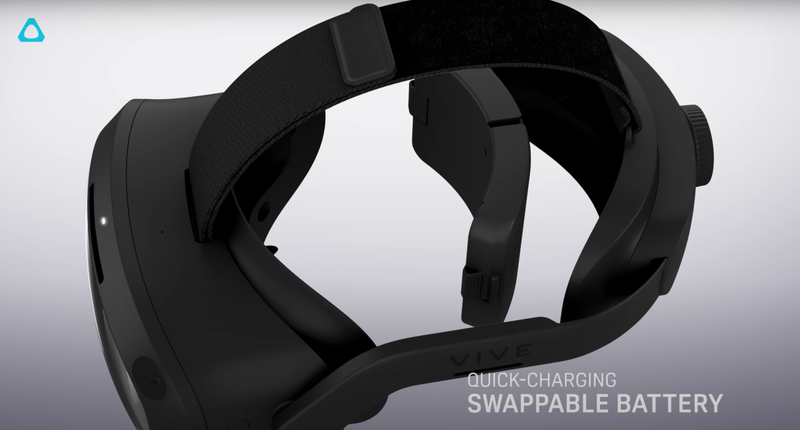
Battery: Deciding how much power you need.
The battery life of any device has an important impact on your enjoyment of it. PC VR typically gets its power directly from the computer to which it is connected, so in theory you could use a PC VR headset for as long as the computer stays charged.
If your connection to the PC is wireless, however, then your PC VR headset will need to connect to a power bank of some kind, and the range of power banks available is beyond the scope of this article.
On the other hand, all-in-one VR includes a battery by definition, so that battery will determine how long you can use the headset in a single go. Keep in mind, though, that VR is a resource-intensive experience, with bright, high-contrast video playing on two high-resolution screens simultaneously. That can drain a battery quite quickly.
Getting a bigger battery is also not always practical for a head-mounted device like a VR headset, as doing so will add to its size and weight. A well-designed AIO VR headset must balance battery life with the quality of the VR experience it delivers. For reference, the VIVE Focus 3’s battery allows for up to 2 hours of continuous use.
There is a caveat here—if the headset battery is swappable (as is the case with both VIVE Focus 3 and VIVE XR Elite, as well as with the PC VR-standalone hybrid, VIVE Focus Vision), then you could always switch out a depleted battery for a charged one to keep enjoying VR longer. It’s a tiny bit more work, sure, but something to consider if you value the other advantages of AIO VR.

Content: VR apps and games for everyone.
Because of the difference in graphics (and, in some cases, tracking) supported by PC VR and standalone VR headsets, the content you can enjoy on each kind of device also differs.
All-in-one VR headsets tend to feature titles that can be experienced with 3DoF controls and less complex visuals, such as 360° movies and games that can be played either sitting or standing.
PC VR headsets, meanwhile, go all out with graphics, delivering AAA games like Half-Life: Alyx and The Walking Dead: Saints & Sinners that really make you move.
You’ll get a better idea of what sort of VR titles await you on each kind of VR device by checking the platforms available on them, such as VIVEPORT, Steam, and VIVE Business AppStore.
But remember that some standalone VR headsets are also capable of connecting to a computer. Using a feature like VIVE Streaming can unlock tons of PC VR content you wouldn’t otherwise be able to enjoy.
How do I choose the best standalone VR headset?
Which VR device you get is largely a personal decision and depends on which characteristics you value most.
If you’re set on buying a standalone VR headset, you can’t go wrong with VIVE Focus 3. Designed to meet the diverse needs of enterprises, it’s a versatile device that gives you the freedom and comfort of AIO VR with powerful software applications and the option to connect to a PC for even more content.
On the other hand, if you’re more interested in an AIO VR device for gaming, VIVE XR Elite is the headset for you. Its PC connectivity lets you enjoy AAA game titles on both VIVEPORT and SteamVR, while the high-resolution color passthrough it offers opens up a new world of mixed reality experiences.
And if you'd like to have a standalone form but care more about PC VR, you'll want the new VIVE Focus Vision, a hybrid VR headset that works as an all-in-one but also supports DisplayPort mode, which offers visually lossless, low-latency graphics delivered straight from your computer.
Still not sure which type of VR headset you want? Try our handy product comparison tool now.
